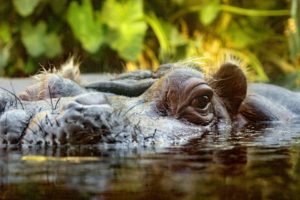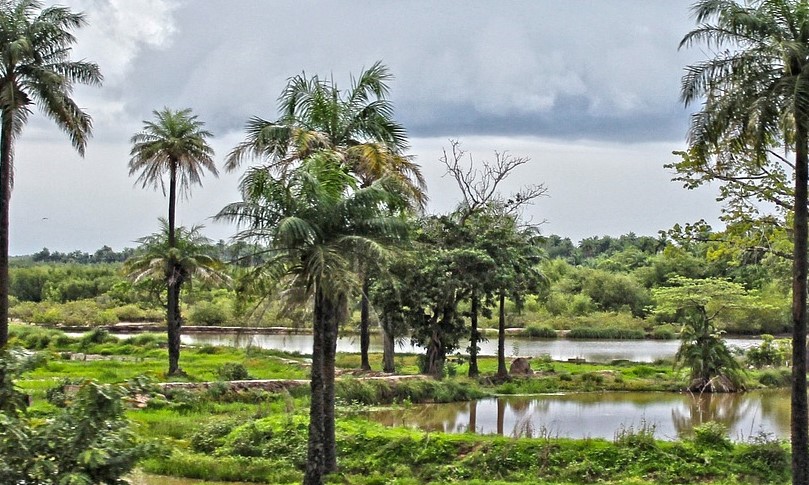The Gambia might be the smallest and poorest country in Africa, but it is rich in wildlife. In fact, did you know that 3.7% of the country is wildlife reserve? The Gambia is concerned with preserving their wildlife and plan to extend reserve areas to 5%.[1]

Laughing Hyena: The Gambia’s National Animal
These opportunistic hunter-scavengers are actually the most common large carnivore in Africa. Also called the spotted hyena, they are a national symbol of The Gambia. These iconic animals live in large, matriarchal groups, though they demonstrate little cooperation between individuals. Hyenas are known as scavengers – even grave robbers! Their ability to digest skin and bone as well as flesh make them efficient eaters. In spite of their reputation, they actually hunt more than forage and are capable of chasing pray for considerable distances.
Hyenas have been noteworthy since Paleolithic times, when they were painted on cave walls. The Ancient Greeks wrote about them, and we are still fascinated by them today. Hyenas are frequently identified with evil and negative connotations, such as greed and trickery. In The Gambia, however, they are also seen as spirits of the landscape, symbols of unity and the strength of a group.[2]
Common Hippopotamus
Common throughout the African continent, the hippopotamus is actually the third-largest land-animal after the elephant and rhinoceros. They weigh around 3,000lbs – males a little more, females a little less. And while the name

is Greek, the Ancient Egyptians had a hippopotamus goddess, Tawaret. Hippopotami (or, if you prefer, hippopotamuses) are actually very aggressive and territorial in the water. In fact, some consider them the most dangerous animal in the world! And it is little wonder, considering these giants can sprint up to 30 miles per hour, can open their massive jaws nearly 180˚ and slam shut with 1800 PSI![3]
Hippopotami are (mostly) herbivores. They live in large groups and spend most of their time in the water; babies are even born in the water. Sadly, hippos are hunted for their large ivory canines. When you visit The Gambia you can see them, along with crocodiles, monkeys, and a variety of birds, at the River Gambia National Park.
Return of the Baboons
Like many monkeys, baboons are highly social animals and live in large groups (troops). Unlike most monkeys, though, baboons spend most of their time on the ground. The savanna baboon (also called the Guinea baboon) is one of the smallest baboons and is found in The Gambia, Senegal, and Guinea area. They live in dry forest and bush savannas, land that was under severe threat of deforestation in the 1990s. That is, until a couple of Englishmen purchased several square kilometers and began planting trees as part of a nature and cultural reserve. And, with the return of their habitat, eventually came the return of the baboons.

Now you can visit the Makasutu Culture Forest and witness their antics for yourself at the nearby resort. Just remember to keep your toiletries inside!
So Much More!
There are, of course, many more animals in The Gambia – far too many to list in this short article. Wildlife and bird tours are popular excursions for tourists to The Gambia, where you can see many of them for yourself in their natural habitat!
[1] https://a-z-animals.com/animals/location/africa/gambia/
